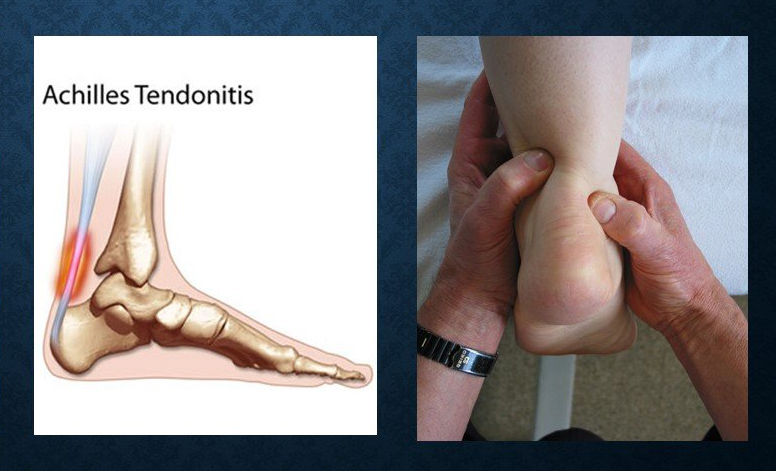What is Achilles tendonitis?
The Achilles tendon is very strong. It is found at the back of your ankle and connects your calf muscle to the bone in the heel of your foot. The Achilles tendon can become inflamed for a number of reasons, the main reason being overuse. The Achilles tendon has a poor blood supply and, therefore, it is slow to heal. Achilles tendonitis may happen as a result of an increase in activity, overuse or training too much, especially on hard surfaces or up hills.
What are the symptoms of Achilles tendonitis?
Pain in the Achilles tendon is usually felt during exercise. Achilles pain will gradually come on with prolonged exercise but will go away with rest. Swelling over the Achilles tendon is common, as is redness over the skin. Sometimes a creaking or lumpiness is felt when you press your fingers into the tendon and move the foot.
What are the causes of Achilles tendonitis?
Achilles tendonitis is an overuse injury, and is often a case of 'too much, too soon'. Running up hills will mean the Achilles tendon has to stretch more than normal during each stride. This will not cause problems initially but the tendon will fatigue sooner than normal. Flat (or 'pronated') feet can place an increased strain on the Achilles tendon. As the foot rolls in (pronates) and flattens, the lower leg rotates inwards also which twists and stretches the Achilles tendon.
What should I do if I have Achilles tendonitis?
An assessment with a podiatrist should be sought to review the cause of your Achilles tendonitis and a management plan devised to treat the condition. Your running regime may require modifying, as may footwear.
What shouldn't I do if I have Achilles tendonitis?
'Running through' pain should be avoided. Continuing with the current, possibly harmful training regime that is causing the symptoms is likely to cause further damage and should be avoided.
Could there be any long term effects of Achilles tendonitis?
The worst case scenario is that the tendon snaps. This is also known as a complete rupture of the Achilles tendon. It can occur all of a sudden if vigorous exercise is attempted out of the blue, or it can occur after a long period of tendonitis. A completely ruptured Achilles tendon requires urgent attention.
Podiatry treatment for Achilles tendonitis
An orthotic (shoe insole) that reduces the amount of pronation (the foot and leg rolling inwards) can help reduce overstrain on the tendon. Footwear advice can be provided by the podiatrist as to what is suitable for training.





